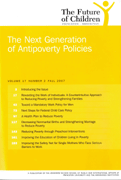Throughout the past year, we have heard paid leave debated in state houses and on the campaign trail. I am all in favor of paid leave. As I have argued elsewhere, it would enable more people, especially those in lower-paid jobs, to take time off to deal with a serious illness or the care of another family member, including a newborn child. But we shouldn’t stop with paid leave. We should also consider shortening the standard work week. Such a step would be gender neutral and would not discriminate between the very different kinds of time pressures faced by adults. It might even help to create more jobs.
The standard work week is 40 hours — 8 hours a day for five days a week. It’s been that way for a long time. Back in 1900, the typical factory worker spent 53 hours on the job, more than a third more hours than we spend today. The Fair Labor Standards Act was passed in 1938, and set maximum hours at 40 per week. Amazingly, more than three quarters of a century after passage of the FLSA, there has been no further decline in the standard work week. Not only has the legal standard remained unchanged, but 40 hours has become the social and cultural norm.
What’s going on here? Economists predicted that as we became more prosperous we would choose to work fewer hours. That hasn’t happened. Instead we have kept on working at about the same pace as we did earlier in our history, but have poured all of the gains from productivity growth into ever-higher levels of consumption – bigger houses, more electronic gadgets, fancier cars. With increased prosperity, people are buying more and more stuff, but they don’t have any more time to enjoy it. A reduction in the standard work week would improve the quality of life, especially for those in hourly jobs who have benefitted hardly at all from economic growth in recent decades.
Two-earner couples would also benefit. Among couples between the ages of 25 and 54, the number of hours worked increased by 20 percent between 1969 and 2000, from 56 hours to 67 hours (for both husband and wife combined). As Heather Boushey notes in her new book, Finding Time, we no longer live in a world where there is a “the silent partner” in every business enterprise, the iconic “American Wife,” who takes care of the children and the millions of details of daily living. With a shorter work week, both men and women would have more time for everything from cutting the grass to cooking dinner with no presumption about who does what. Although much of the debate this year has been about work-family balance, empty nesters or singles without young children might also welcome a shorter work week. For them it would provide the chance to follow their dream of becoming an artist, a boat builder, or the creator of their own small business.
Shorter hours could have another benefit and that is more jobs for workers who would otherwise be left behind by technological change. Many economists believe that as existing jobs are replaced by machines and artificial intelligence, new jobs will be created in technical, management, and service fields. But will this happen fast enough or at sufficient scale to reemploy all those who now find themselves without decent-paying work? I doubt it. A shorter work week might help to spread the available jobs around. Germany and other European countries, along with a few U.S. states used this strategy during the Great Recession. It kept more people on the job but at shorter hours and reduced unemployment. Using a similar strategy to deal with automation and long-term joblessness, although controversial, should not be dismissed out of hand.
Of course, shorter hours can mean lower total pay. But in one typical survey published in the Monthly Labor Review, 28 percent of the respondents said they would give up a day’s pay for one fewer day of work per week. Any new movement to reduce the work week would need to be phased in slowly, with flexibility for both employers and employees to negotiate adjustments around the standard. Yet if done correctly, the transition could be accomplished with little or no reduction in wages, just smaller raises as a bigger slice of any productivity improvement was invested in more free time. When Henry Ford reduced the work week from 6 to 5 days in 1926, he did not cut wages; he assumed that both productivity and consumption would rise, and his example encouraged other employers to follow suit.
I am not talking about reducing hours for those of us who want to spend long hours at work because we enjoy it. We would still be free to work 24/7, tied to our electronic devices, and no longer knowing exactly when work begins and ends. A new hours standard would primarily affect hourly (nonexempt) employees. These are the people in the less glamourous jobs at the bottom of the ladder, many of them single parents. Right now they finish work exhausted only to come home to a “second shift” that may be equally exhausting. A reduction in the standard workweek would almost certainly improve the quality of life for these hard-pressed and overworked Americans.
By all means, let’s enact a paid leave policy, but let’s also debate some even bigger ideas – ones that could lead to greater work-life balance now, and more job opportunities in the longer run.
Editor’s note: This piece originally appeared on The Washington Post’s In Theory Blog.
The Brookings Institution is committed to quality, independence, and impact.
We are supported by a diverse array of funders. In line with our values and policies, each Brookings publication represents the sole views of its author(s).










Commentary
Op-edTime for a shorter work week?
May 13, 2016